Intel's Haswell Architecture Analyzed: Building a New PC and a New Intel
by Anand Lal Shimpi on October 5, 2012 2:45 AM ESTPlatform Retargeting
Since the introduction of Conroe/Merom back in 2006 Intel has been prioritizing notebooks for the majority of its processor designs. The TDP target for these architectures was set around 35 - 45W. Higher and lower TDPs were hit by binning and scaling voltage. The rule of thumb is a single architecture can efficiently cover an order of magnitude of TDPs. In the case of these architectures we saw them scale all the way up to 130W and all the way down to 17W.

In the middle of 2011 Intel announced its Ultrabook initiative, and at the same time mentioned that Haswell would shift Intel's notebook design target from 35 - 45W down to 10 - 20W.
At the time I didn't think too much about the new design target, but everything makes a lot more sense now. This isn't a "simple" architectural shift, it's a complete rethinking of how Intel approaches platform design. More importantly than Haswell's 10 - 20W design point, is the new expanded SoC design target. I'll get to the second part shortly.
Platform Power
There will be four client focused categories of Haswell, and I can only talk about three of them now. There are the standard voltage desktop parts, the mobile parts and the ultra-mobile parts: Haswell, Haswell M and Haswell U. There's a fourth category of Haswell that may happen but a lot is still up in the air on that line.
Of the three that Intel is talking about now, the first two (Haswell/Haswell M) don't do anything revolutionary on the platform power side. Intel is promising around a 20% reduction in platform power compared to Sandy Bridge, but not the order of magnitude improvement it promised at IDF. These platforms are still two-chip solutions with the SoC and a secondary IO chip similar to what we have today with Ivy Bridge + PCH.
It's the Haswell U/ULT parts that brings about the dramatic change. These will be a single chip solution, with part of the voltage regulation typically found on motherboards moved onto the chip's package instead. There will still be some VR components on the motherboard as far as I can tell, it's the specifics that are lacking at this point (which seems to be much of the theme of this year's IDF).
Seven years ago Intel first demonstrated working silicon with an on-chip North Bridge (now commonplace) and on-package CMOS voltage regulation:
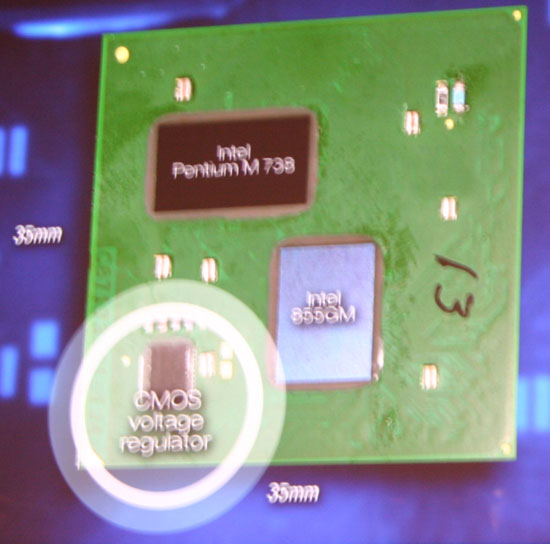
The benefits were two-fold: 1) Intel could manage fine grained voltage regulation with very fast transition times and 2) a tangible reduction in board component count.
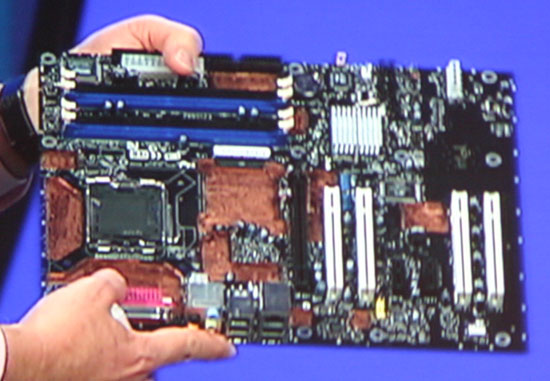
2005 - A prototype motherboard using the technology. Note the lack of voltage regulators on the motherboard and the missing GMCH (North Bridge) chip.
The second benefit is very easy to understand from a mobile perspective. Fewer components on a motherboard means smaller form factors and/or more room for other things (e.g. larger battery volume via a reduction in PCB size).
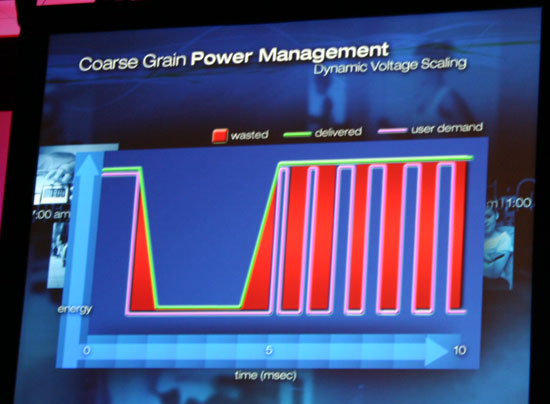

The first benefit made a lot of sense at the time when Intel introduced it, but it makes even more sense when you consider the most dramatic change to Haswell: support for S0ix active idle.


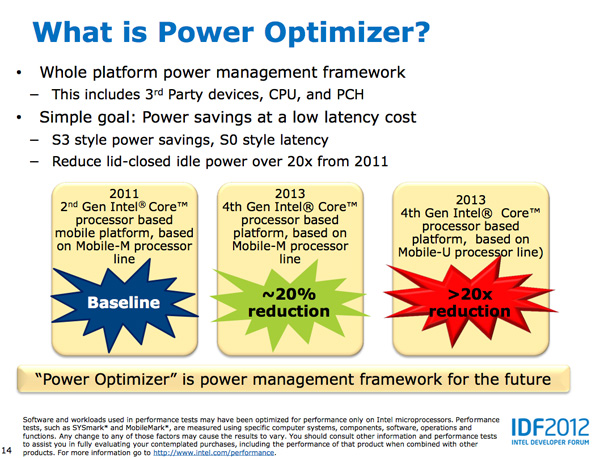
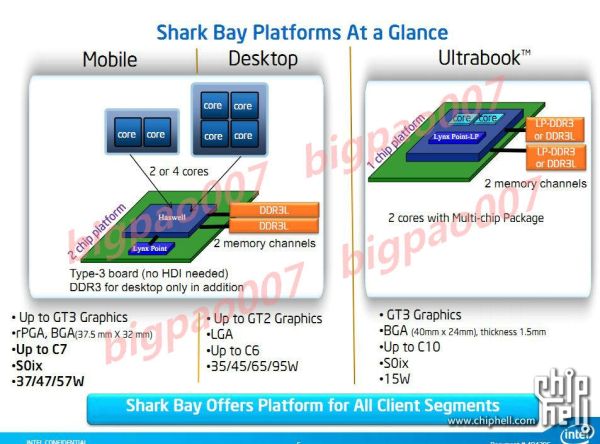








245 Comments
View All Comments
kukreknecmi - Friday, October 5, 2012 - link
I hope i know it right. L3 on SB/IB doest used by GPU. L3 still servers as cache on system via memory controller. If GPU nneds to acess to memory, it sends request to memory controller. L3 is not directly accessable to GPU as a texture cache etc.On IB, they added a 512k cache which is seperated to half, 256k of it is used as texture system as backfeeding and other 256k half is used for other things.Article implies that L3 cache on IB is used as a texture buffer like on ordinary graphic cards. Only on Haswell L3 cache will be accessable and can be used as a some kind of GPU specific buffer.
Kevin G - Friday, October 5, 2012 - link
The confusing thing is that consumer Ivy Bridge parts have a L3 cache just for the GPU which is separate memory than the L3 cache that the CPU uses. The Ivy Bridge GPU's can use the CPU's L3 cache as the GPU's L4 cache to a degree.To confuse things further, the CPU side really has four levels of cache too. There is the small 1.5 KB micro-uop cache for instructions which comes before the 32 KB L1 instruction cache.
mayankleoboy1 - Friday, October 5, 2012 - link
From the article, its not very clear : Which platform (DT, Mobile, ultra mobile) will have the integrated voltage regulators/controllers ?Ryan Smith - Friday, October 5, 2012 - link
Ultra Mobile.Anand Lal Shimpi - Friday, October 5, 2012 - link
It's not clear how much of the VR circuitry gets integrated into Haswell or necessarily which parts will have it and which ones won't. Ultra mobile is a shoe in, but I've even heard of desktop parts getting it as well. We'll have to wait and see.DanNeely - Friday, October 5, 2012 - link
Rats. Reading the article I was hoping that Intel had decided to only bake the VRMs into their ultra-mobile parts. Better VRMs are an important factor in high end OCing; with desktop boards not cramped for space I really hope Intel keeps them off the package.Peanutsrevenge - Friday, October 5, 2012 - link
Seconded.However, I wonder whether the VRMs on high end mobos will still be an option, where the on package VRMs will simply extend the capabilities?
But given Intels recent distaste for overclocking, it wouldn't suprise me if we'll soon see CPUs completely locked from overclocking completely or only on E series, high profit chips.
Homeles - Saturday, October 6, 2012 - link
"However, I wonder whether the VRMs on high end mobos will still be an option, where the on package VRMs will simply extend the capabilities?"Bingo.
Homeles - Saturday, October 6, 2012 - link
Low end motherboards won't need them. High end overclocking boards will have them in addition to the ones on package.tuxRoller - Friday, October 5, 2012 - link
Using lvds reclocking you can reduce idle screen induced wakeups to 30 (ditto for the memory controller if the cpu supports self refresh for the sram ).eDP may allow even less.